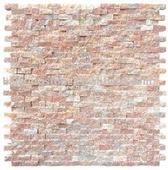 No matter how detailed the decoration plan was made before the renovation, the amount of use required for all the decoration materials was calculated. After the family's renovation, many families still had some leftovers. How to deal with these surplus materials has caused headaches for many families, leaving them with a place to live, throwing them up and being reluctant to do so. If they need them in the future, they will need to purchase them separately. How to rationally use these remaining materials?
No matter how detailed the decoration plan was made before the renovation, the amount of use required for all the decoration materials was calculated. After the family's renovation, many families still had some leftovers. How to deal with these surplus materials has caused headaches for many families, leaving them with a place to live, throwing them up and being reluctant to do so. If they need them in the future, they will need to purchase them separately. How to rationally use these remaining materials? After the renovation, many families chose to deal with the remaining materials at a low price to the decoration company, to relatives and friends, or to throw away the method. In practice, however, the vast majority of these materials can be properly preserved in order to handle bumps in the carrying furniture and tinkering in future life.
Is there any color difference with the rest of the finishing materials? This is a problem that many families are most concerned about. Repairing with the remaining material will result in a certain color difference, but using the remaining material for repair can reduce the difference in decoration to a minimum compared to repurchasing similar products. Therefore, it is necessary to properly store some of the remaining decorative materials.
With the space to save these materials at home, you can choose to save tiles, flooring, latex paint, paint, and other materials. When the home wall, tiles, floors appear partial damage, can be repaired in time, save time, effort, and save money. If there is no material to repurchase after the above conditions occur, even if the original product of the same model is purchased, it will take too long to buy the same batch of products and the same color number. If the tiles used in home decoration, different styles, different colors of tiles, flooring, baseboard can be properly saved two or three pieces.
In addition, because there is no color difference, white latex paint can not be retained, while colored latex paint can be properly retained. Because repairing the damaged paint surface with the remaining emulsion paint can reduce the color difference. At the same time, the decoration family should also keep in mind the proportion of colored latex paint to facilitate the re-purchasing of paint.
The preservation of latex paint is relatively simple. Place the latex paint bucket with a lid and put it in a cool place. At this time, the decoration family should pay attention to the shelf life of latex paint. Usually, the water-resistant latex paint is kept for 10-20 days. Late-night latex paints that are not watered should be used within the shelf life. After all, the latex paint can only be kept for six months after opening.
Finally, the method to be taken care of when saving these materials is as follows: To avoid moisture-induced color change of tiles, baseboards, etc., it is best to wrap tiles and skirtings in plastic bags and place them in a relatively dry environment. In particular, the floor is more prone to moisture deformation and color change during storage, so it is best to wrap the floor in a dry place with a newspaper that absorbs water.
Hitachi Elevator Spare Parts, Hitachi Elevator Parts
Hitachi has been developing and manufacturing elevators and escalators for about 90 years. Social demands on elevators and escalators changed dramatically over time: faster, larger, and barrier-free and required.
History of Hitachi's Elevator and Escalator Business
- 1924Lift manufacturing at the Kameido plant
- 1932First elevator delivered (to Tokyo Electric Power)
- 1937First escalator delivered (to Osaka Railway Department Store)
- 1956Hitachi Building Services Co., Ltd. founded (currently known as Hitachi Building Systems Co., Ltd.)
- 1966Hitachi Elevator Engineering Co ., (Hong Kong) Ltd. founded in Hong Kong
- 1967Construction of an elevator research tower in the Mito plant completed (90m in height)
- 1968300m â„ minute ultra high speed elevator delivered to the Kasumigaseki Building, Japan's first skyscraper
- 1972Hitachi Elevator Engineering (Singapore) Pte. Ltd. founded in Singapore
- 1974Delivery of 540m â„ minute elevators to skyscrapers in Shinjuku
- 1987Hitachi Mito Engineering Co., Ltd. founded
- 1991Siam-Hitachi Elevator Co., Ltd. Founded in Thailand
- 1998Three affiliated companies in China merged to found Guangzhou Hitachi Elevator Co., Ltd.
- 2003Opened Hitachi Building Solution Lab
- 2007Guangzhou Hitachi Elevator Co., Ltd. renamed to Hitachi Elevator (China) Co., Ltd.
- 2008Hitachi Lift India Pvt. Ltd. foundedDelivered the world's highest class ultra fast double deck elevators to the Shanghai World Financial Center
- 2009Introduction of the Company systems leads to the establishment of the Urban Planning and Development Systems Company
- 2010Completed elevator research tower [G1TOWER" (213m in height) for Mito WorksFounded Hitachi Elevator Asia Pte. Ltd. as a general elevators and escalators business company for the Southeast Asia, India, and Middle East regionsCompleted elevator research tower (172m in height) for Hitachi Elevator (Shanghai) Co. Ltd.
-
2011Founded Hitachi Elevator Philippines CorporationDelivered 600m â„ minute elevators to the Al Hamra Mixed-Use Complex in Kuwait.
Hitachi Elevator Spare Parts, Hitachi Elevator Parts
CEP Elevator Products ( China ) Co., Ltd. , https://www.zjsmartcommercialescalators.com